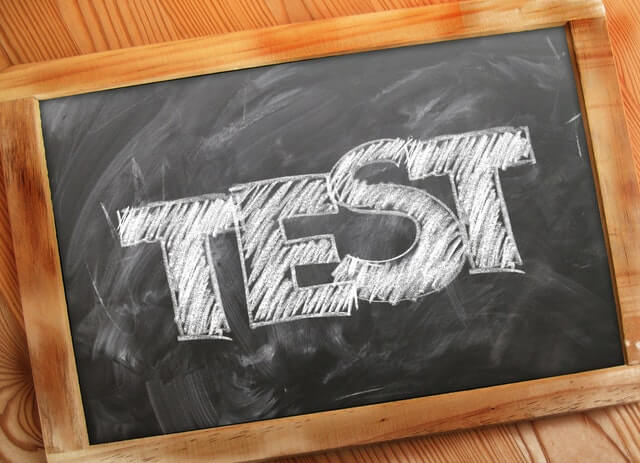What Is the Keirsey Temperament Sorter?
The Keirsey Temperament Sorter is a self-inventory personality questionnaire developed by psychologist David Keirsey and introduced in his 1978 book titled Please Understand Me. Keirsey based his assessment on the Myers-Briggs Type Indicator (MBTI). The Keirsey Temperament Sorter categorizes people into one of four different temperaments: Gaurdian, Artisan, Idealist, and Rational. Each temperament is then…

The Keirsey Temperament Sorter is a self-inventory personality questionnaire developed by psychologist David Keirsey and introduced in his 1978 book titled Please Understand Me.
Keirsey based his assessment on the Myers-Briggs Type Indicator (MBTI). The Keirsey Temperament Sorter categorizes people into one of four different temperaments: Gaurdian, Artisan, Idealist, and Rational. Each temperament is then sorted into one of four character types. Like the MBTI, there are a total of 16 different personality types identified by the Keirsey Temperament Sorter.
How Does the Keirsey Temperament Sorter Work?
Keirsey’s assessment describes four key temperaments: Artisan, Guardian, Idealist, and Rational.
Keirsey defines temperaments as a “configuration of observable personality traits, such as habits of communication, patterns of action, and sets of characteristic attitudes, values, and talents.”
These four main temperaments are then further divided into four character types, leading to a total of 16 different personality types. These personality types correlate with the 16 types described by the Myers-Briggs Type Indicator.
The Four Keirsey Temperaments
Each of the four temperaments represents a distinct personality type that has different strengths and weaknesses.
Artisan
Artisans tend to be rooted in concrete experiences. Keirsey describes them as optimistic, realistic, bold, spontaneous, and focused on the here and now. The four types of Artisans are the Promoter, the Crafter, the Performer, and the Composer.
Keirsey suggests that around 30% to 35% of all people are Artisans.
Guardian
Guardians are hard-working, dependable, loyal, stable, and responsible. They tend to be cautious and concerned with maintaining tradition. The four types of Guardians are the Supervisor, the Inspector, the Provider, and the Protector.
Keirsey estimates that approximately 40% to 45% of all people are Guardians.
Idealist
The Idealist temperament is enthusiastic, intuitive, romantic, truth-seeking, kind, inspirational, and authentic. Idealists seek self-knowledge and self-understanding and strive to achieve their ultimate potential. The four types of Idealists are the Teacher, the Counselor, the Champion, and the Healer.
Keirsey suggests that about 15% to 20% of all people are Idealists.
Rational
Keirsey describes rationals as having a problem-solving temperament. These individuals tend to be pragmatic, independent, strategic, and skeptical. The four types of Rationals are the Fieldmarshal, the Mastermind, the Inventor, and the Architect.
Keirsey says this is the least common temperament, accounting for just 5% to 10% of all people.
The 16 Character Types on the Keirsey Temperament Sorter
Each of the four temperaments can be further divided into different character types. Each one is associated with a four-letter acronym corresponding to the Myers-Briggs Type Indicator type.
These letter acronyms stand for:
- Extraversion (E) vs. Introversion (I)
- Sensing (S) vs. Intuition (N)
- Thinking (T) vs. Feeling (F)
- Judging (J) vs. Perceiving (P)
These 16 personality types are:
Artisans
- Crafter (ISTP): Fearless, audacious, coordinated, instinctive, and independent.
- Promoter (ESTP): Magnetic, unpredictable, risk-taking, proactive, and tactical.
- Composer (ISFP): Perceptive, graceful, spontaneous, introspective, and kind.
- Performer (ESFP): Engaging, generous, optimistic, charming, and pleasure-seeking.
Guardian
- Inspector (ISTJ): Reliable, straightforward, traditional, attentive, and conservative.
- Supervisor (ESTJ): Responsible, honorable, organized, detailed, forceful, and authoritative.
- Provider (ESFJ): Supportive, sociable, conscientious, caring, structured, and collaborative.
- Protector (ISFJ): Dedicated, self-sacrificing, thorough, respectful, stable, diligent, and frugal.
Idealist
- Healer (INFP): Reconciling, inspiring, harmonious, nurturing, and idealistic.
- Champion (ENFP): Passionate, exploring, networking, enthusiastic, authentic, and eclectic.
- Teacher (ENFJ): Expressive, intuitive, idealistic, influential, warm, engaging, and principled.
- Counselor (INFJ): Complex, authentic, harmonious, sensitive, empathetic, and connecting.
Rational
- Architect (INTP): Autonomous, conceptual, inquiring, logical, preoccupied, and complex.
- Fieldmarshal (ENTJ): Commanding, enterprising, strategic, communicating, efficient, and visionary.
- Inventor (ENTP): Imaginative, curious, pragmatic, and open-minded.
- Mastermind (INTJ): Planning, self-confident, systemic, utilitarian, willful, and ingenious.
Understanding the Temperament Matrix
So what makes the four temperaments different? Keirsey suggested that each type arises from key differences in two primary dimensions: communication and action.
Communication can either be concrete or abstract:
- Concrete communication involves talking about reality.
- Abstract communication involves talking about ideas.
Action can either be cooperative or utilitarian:
- Cooperative action involves doing what is right.
- Utilitarian action involves doing what works.
You can look at how these dimensions relate to the four temperaments that Keirsey described:
- Guardians are concrete and cooperative.
- Artisans are contrete and utilitarian.
- Idealists are abstract and cooperative.
- Rationals are abstract and utilitarian.
Taking the Keirsey Temperament Sorter
The test consists of 70 self-report questions with two choices for each option. Test-takers select the option that best describes their temperament or behaviors. Versions of the test are offered online for free, including at the Keirsey.com website.
Uses for the Keirsey Temperament Sorter
The Keirsey Temperament Sorter is one of the most widely used personality assessments in the world today. Its users include some of the largest corporations in the world including:
- Coca-Cola
- AT&T
- IBM
- Bank of America
- U.S. Air Force
The test is designed to help people gain a greater understanding of their own personality and how they interact with other people and their environment.
How Does it Differ From Myers-Briggs?
While the 16 variants described by Keirsey correspond to the 16 types identified by the MBTI, Keirsey’s assessment differs from the Myer-Briggs indicator in a number of ways.
Emphasis on Sensing/Intuition vs. Extroversion/Introversion
Both Keirsey and Myers-Briggs drew heavily on Carl Jung’s work, but Keirsey’s assessment stresses the sensing/intuition spectrum, while Myers and Briggs centered their work on the extroversion/introversion spectrum.
Temperament vs. Cognitive Functions
Keirsey’s assessment categorizes personality by temperament, while the MBTI groups types according to cognitive functions such as thinking and feeling.
Behaviors vs. Thoughts and Feelings
Finally, Keirsey’s sorter stresses actual observable, overt behaviors, while the Myers-Briggs focuses more on internal thoughts and feelings.
Key Points to Remember:
- The Keirsey Temperament Sorter categorizes personality into one of four main temperaments.
- Each temperament can then be subdivided into four different character types.
- Each of these 16 character types is associated with specific traits, preferences, and tendencies.
- The combination of the four-letter code (e.g., ISTJ, ENFP) represents an individual’s temperament and personality type based on their responses to the Keirsey Temperament Sorter questionnaire.
Sources:
Keirsey.com. (n.d.). The Keirsey Temperament Sorter. Retrieved from http://www.keirsey.com/default.aspx
Keirsey temperament versus Meyers-Briggs Types. (n.d.). Keirsey.com. Retrieved from http://www.keirsey.com/difference.aspx
Keirsey.com. The four temperaments. https://keirsey.com/temperament-overview/





